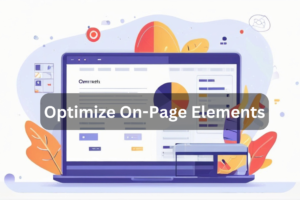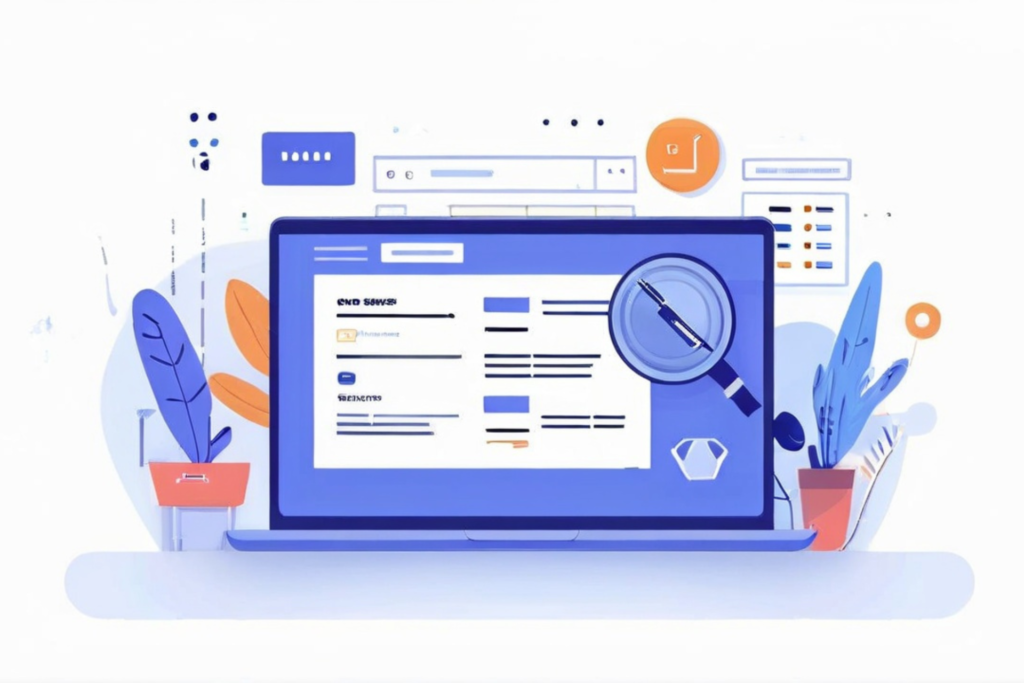Optimize On-Page Elements is important in making website to appear easily on search engine and in getting more traffic naturally. When regarding location of keywords, using the schema markup for the rich snippets and when coming up with a reliable SEO method, one can make his/her content rank well. These elements in unison, make the user interact more, thereby making SEO positive and long lasting.
Why Optimize On-Page SEO Elements Like Title Tags and Meta Descriptions Boosts Visibility”
Optimize On-Page Elements particularly the use of title tags and meta descriptions is vital for the achievement of online visibility and ranking. When these elements are done bearing the keywords, they make a nice teaser that will drive traffic to the link. Well-developed on-page SEO enhances search intent, and it almost always surpasses off-page SEO in terms of people’s interest in staying on the page.
Moreover, ‘Meta tags such as Title help in enhancing click through rates by ensuring right keyword incorporation for visibility of the content on SERP. Meta tags are used in order to describe the content of a web page and when written well they help the user to find what they are looking for, and therefore interact more. Collectively, all these on-page components contribute to creating visibility and improve the ranking factors needed in the SEO processes.
Optimize On-Page Elements: Using Header Tags, URL Structure, and Internal Links for Effective SEO
Use of header tags (H1, H2 and H3) is useful when grouping content since it helps when designing an Optimize On-Page Elements. Applying these HTML tags provides a formulation of the content for both people and search engines in the easiest way possible. SEO calls this as improving the readability, as proper organization of the content makes it easier to go through by the viewer and hence the search engine spiders.
URL optimization lends itself to clarity and relevance – two factors critical to searching in a search engine. The use of primary keywords in URLs provides users and search engines with an quick understanding of page content there by resulting in better search returns. SEO friendly URLs are concise, keyword rich and best of all, they are also part of an integrated approach towards SEO optimization, on the page level.
Internal linking helps to provide better connections between the different web pages; therefore helping to ensure that the SEO on the page is enhanced. Internal link strategies create a form of classification of content to facilitate the determination of link significance by the search engine. Some carefully created linking strategy increases the site’s authority, which makes the identification of optimized on page elements even more useful in terms of SEO goals achieving.

Enhancing SEO with Image Optimization and Readable Content for Better User Engagement
On page technical optimization involves the improvement of page factors for instance images. Cutting down the size of the images used in the webpage lowers the download time, making search engine favor fast accessible pages. It also slightly increases, the time to load your content which can increase its ranking, guarantees the placement of the target keyword next to the optimized images.
On this account, making content as readable as possible contributes to a growth in users’ engagement level which plays an important role in the conception of effective SEO. This type of content makes users stick on the page hence giving a quality signal to the search engines. This strategy of weaving readability complemented with relevant keywords to the subject of a page is one way by which search engines document relevance and rank the document highly.
Effective Keyword Use, Schema Markup, and Strategy for On-Page SEO Success
A good on-site optimization process includes the right choice of keywords and their correct placement and frequency which will not lead to keyword density but relevance instead. Strategically embedded target words make it easier for search engines to identify the topic of the content posted for visibility. Therefore, while ensuring that you are using your keywords naturally in order to optimize your content is a perfect strategy to go hand in hand with the on-page SEO guide, it will, therefore, make your content to be both readable and SEO optimized.
Including schema markup provide rich snippets that define your content making it to stand out of the rest in SERPs. Schema tags provide further context to the search engine about the content on your site making it more likely to appear in enhanced result snippets.
Last but not the least, targeting all Optimize On-Page Elements SEO components helps to combine all efforts into a single whole. All in one bring more relevance and visibility Keyword placement Schema markup Increase the dominance of identifiers of the topic. Adopting strategies that are within the on-page SEO checklist every time you work on content will help a site retain a competitive position on search engines.


